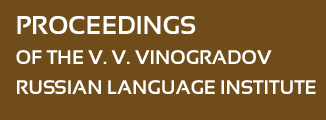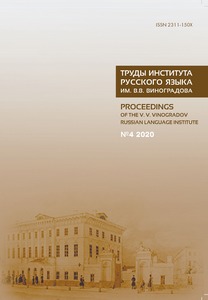PRONUNCIATION PECULIARITIES OF RUSSIAN CONJUNCTIONS AND PARTICLES AS AN OBJECT OF LEXICOGRAPHY
Abstract:
The purpose of the article is to demonstrate the main problems of orthoepic dictionary description of conjunctions and particles and to sketch out the ways of solving these problems. In an orthoepic dictionary, segmental peculiarities of functional words, as well as their unstressed realizations and fluctuations between unstressed and stressed ones should be reflected consistently — for all functional words which have such peculiarities (e. g. fl uctuations between [o] and [ə] in vot ‘here’, chto ‘that’ and so on). Not rarely monosyllabic conjunctions and particles are clitics, and since phonemes behaviour can vary in sandhi of a clitic and its host, it is necessary to indicate this information in an orthoepic dictionary as well: zamër[s‿vj]ed’ ‘froze after all’, ve[tj‿v]ý shli ‘came out after all’, etc. (pronunciation zamër[z‿vj]ed’ and ve[dj‿v]ýshli is commonly believed o be non-standard); on the base of conjunctions and particles this has never been done in an orthoepic dictionary of Russian language. When there are homonyms, it is important to differentiate them, e. g. conjunction chto ‘that’ and pronoun chto ‘what; that’, having some distinctions from each other. Finally, in Russian orthoepic dictionaries, segmental pronunciation peculiarities of some conjunctions and particles are “hidden” in a theore tical article placed after the main part of a dictionary. One should correct it: pronunciation peculiarities of functional words ought to be described comprehensively not only in such an article, but also in their dictionary entries.


